Books by James Conolly
Geographical Information Systems (GIS) is a rapidly developing archaeological method which is mov... more Geographical Information Systems (GIS) is a rapidly developing archaeological method which is moving from the domain of the computer specialist into that of the broader archaeological community. This comprehensive manual on the use of GIS in archaeology explores the concept of GIS and illustrates how it can be adapted for practical use. Examining issues such as spatial databases, data acquisition, spatial analysis, and techniques of visualization, the book is an essential tool for both students and professional archaeologists.
Edited Books by James Conolly
British Archaeological Reports IS 1829, 2008
Papers by James Conolly
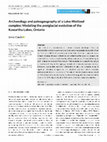
Geoarchaeology, 2020
This study uses a combination of isostatic rebound, hydrological flow, and sedimentation models t... more This study uses a combination of isostatic rebound, hydrological flow, and sedimentation models to generate predictions about the postglacial evolution (from ea. 12.0 ka cal BP to the modern-day) of the Kawartha Lakes region of central Ontario, Canada. Changes in shoreline and wetland configuration are mapped and quantified so as to inform understanding of the environmental history of the region and illuminate the manner of its evolution. This knowledge is discussed in the context of the human history of the region, particularly the relationship between ancestral Indigenous communities and their relationship to lakes and wetlands. Areas of significant shoreline transgression are identified and thus where inundated archaeological sites are likely to exist. The scale of loss of wetland areas as a result of 19th-century dam construction is also estimated along with the impacts of settler dams on Michi Saagigg Nishnaabeg First Nations traditional harvesting practices.

Archaeology of Eastern North America, 2018
This paper examines patterning in bifacial tool manufacturing traditions associated with the Laur... more This paper examines patterning in bifacial tool manufacturing traditions associated with the Laurentian Archaic in Northeastern North America, which dates to between approximately 6500-5000 cal BP. The three linked goals of the paper are, first, to define and characterize the within- and between-class variation of the three major Laurentian biface forms—the Otter Creek, Brewerton and Vosburg types; second, to evaluate the degree to which there is spatial variation in biface forms within each of the type categories; and finally, to evaluate whether there is a relationship between the regional biogeographical setting of site-based assemblages, and the within-type variability of those assemblages. The results of the first analysis show how early Laurentian Otter Creek and the later Laurentian Brewerton forms are statistically distinctive forms, whereas considerable overlap is found between the Brewerton and the likely contemporary Vosburg forms. Second, a geospatial pattern corresponding to a ‘isolation by distance’ prediction for both Otter Creek and Brewerton forms is identified; and differences in the size and distinctiveness of pattern is argued to correspond to changes in the scale of regional interaction between the earlier and later Laurentian. Next, assemblage-scale variation in Laurentian biface assemblages is identified as being greater in the northern part of the study area, consistent with a prediction that there should be greater emphasis on innovation arising from experimentation with hunting implements in these higher risk environments. The final section of the paper reflects on these findings and evaluates the utility of Laurentian Archaic concept for characterizing regional variability.
Levant, 2018
We present detailed accounts of the archaeobotanical remains recovered from the excavations of th... more We present detailed accounts of the archaeobotanical remains recovered from the excavations of the southern Levantine Pre-Pottery Neolithic A site of Dhra‘, including metric and morphological analysis of barley grains. Comparisons with other early Epi-Palaeolithic and Neolithic sites indicate that the Dhra‘ grains are larger than recorded wild specimens, but fall at the lower range of domestic species, consistent with intermediary pre-domestication cultivation status. We contextualize these results in relation to associated evidence for food storage at Dhra‘, as well as the ecology of wild plants and early crops, and processing technologies across the Levant.

World Archaeology, 2017
The evolutionary analysis of human behaviour is a broad arena of social science research encompas... more The evolutionary analysis of human behaviour is a broad arena of social science research encompassing anthropological archaeology. Despite its relevance and success in building understanding of past human behaviour, Darwinism remains a polarizing subject in archaeology (cf. Johnston 2010, 182–4). However, because of the development of a deep and varied body of literature on how evolutionary dynamics shape culture, these ideas need to be taken seriously even by critics of the
role evolution has for culture. Although there remain significant challenges in relating theoretical models to types of behaviours that may generate observable material patterns in the archaeological record, these challenges are not faced by evolutionarily influenced research programmes alone. One such evolutionarily informed approach with relevance for making sense of patterns observable in the archaeological record is costly signalling theory, which has been described as 'one of the most influential ideas in evolutionary biology’ (Huttegger, Bruner and Zollam 2015, 997). As a concept with potential powerful explanatory value, it should be assessed as to its potential for making sense ofthe signalling role of phenomena in the archaeological record that are otherwise often proximately described as manifestations of community social cohesion, polity competition, or examples of display of social power through conspicuous consumption.

Our intensive archaeological survey of the entire land surface of the island of Antikythera has d... more Our intensive archaeological survey of the entire land surface of the island of Antikythera has documented a sequence of prehistoric activity going back at least as far as the Late Neolithic. The key component of the very earliest material culture from the island is knapped obsidian and chert artefacts and here we discuss the main results arising from detailed study of this assemblage, as well as offering a preliminary exploration of the chronology, spatial distribution and landscape setting of these finds as well as their broader regional context. We propose that Antikythera was embedded within a Late Neolithic interaction sphere and visited frequently by mobile non-permanent groups. Spatial analysis shows differences in the location of local cherts compared to obsidian which reflect what we interpret as a growing reliance on local chert. In addition, we define a number of locations of clusters of lithic tools and debitage with a tendency for projectiles to be located closer to the coast and blade components of the assemblage inland, in areas likely to be more conducive to small scale farming. There is no evidence of differential access to obsidian by a particular community acting as a redistributive centre as is documented in the southern Argolid, and there is no evidence to suggest the material entering the island was under any form of organisational control. This is in keeping with a model that sees small scale and relatively undifferentiated settlement across the island by at least the Early Bronze Age of small scale farming families exploiting pockets of the more fertile and more easily worked soils.

Quaternary Science Reviews, 2014
In this paper we estimate the degree to which the range and proportion of wild plant foods are un... more In this paper we estimate the degree to which the range and proportion of wild plant foods are underrepresented in samples of charred botanical remains from archaeological sites. We systematically compare the differences between central European Neolithic archaeobotanical assemblages that have been preserved by charring compared to those preserved by waterlogging. Charred archaeobotanical assemblages possess on aggregate about 35% of the range of edible plants documented in waterlogged samples from wetland settlements. We control for the ecological availability of wetland versus terrestrial wild plant foods on assemblage composition and diversity, and demonstrate that the significantly broader range of wild plant food taxa represented is primarily a function of preservation rather than subsistence practices. We then consider whether observed fluctuations in the frequency of edible wild taxa over time can also be attributed to preservation, and demonstrate that it cannot; and thus conclude that there are significant changes in plant food diets during the Neolithic that reflect different strategies of land use and, over time, a decreasing reliance on foraging for wild plant foods. The wild species included in our analyses are not spatially restricteddthey are common throughout central Europe. We maintain, therefore, that our results are relevant beyond our study area and more generally illustrate the challenges of attempting to reconstruct the relative importance of wild plant foodsdand thus plant diet breadthdin Neolithic archaeobotanical assemblages from charred data alone.
Antiquity, 2014
It has long been recognised that the proportions of Neolithic domestic animal species-cattle, pig... more It has long been recognised that the proportions of Neolithic domestic animal species-cattle, pig and sheep/goat-vary from region to region, but it has hitherto been unclear how much this variability is related to cultural practices or to environmental constraints. This study uses hundreds of faunal assemblages from across Neolithic Europe to reveal the distribution of animal use between north and south, east and west. The remarkable results present us with a geography of Neolithic animal society-from the rabbit-loving Mediterranean to the beef-eaters of the north and west. They also demonstrate that the choices made by early Neolithic herders were largely determined by their environments. Cultural links appear to have played only a minor role in the species composition of early Neolithic animal societies.
Human Ecology, 2013
Terraces are ubiquitous, in some ways defining, features of Mediterranean environments, yet their... more Terraces are ubiquitous, in some ways defining, features of Mediterranean environments, yet their longerterm history and relationship to human populations and food economies are not well understood. This paper discusses a complete system of terraces across the small island of Antikythera, Greece. We bring together the evidence from archaeology, ethnography, archival history, botany and geoarchaeology, supported by direct dating of buried terrace soils, and consider terrace investment in relation to major episodes in the island's punctuated history of human activity. This broad-spectrum approach leads to a range of interesting insights on the spatial structure of terraces, on the degree of correlation between terrace construction and changing human population, and on the implications of terrace abandonment for vegetation and soils.
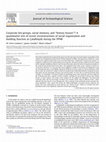
Journal of Archaeological Science, 2013
It has been argued that the corporate kin-group was the main form of socioeconomic organization a... more It has been argued that the corporate kin-group was the main form of socioeconomic organization at the Turkish site of Çatalhöyük during the Pre-Pottery Neolithic B (PPNB). This hypothesis is linked to a claim of long-term repetitive patterning in the use of household space. Çatalhöyük's corporate kin-groups, it is suggested, would have been maintained by social memory, and social memory would have been created by the repeated rebuilding of houses with the same floor plan and by the burial of important members of the corporate kin-groups under house floors. This hypothesis been taken up by a number of authors in recent years. However, it is not clear how much confidence should be invested in the hypothesis as the use of household space at Çatalhöyük during the PPNB has not been subject to formal evaluation. With this in mind, we carried out a study in which we examined the relationship between continuity in house floor plans and the percentage of houses that contain burials. To assess the co-variation between these variables, we developed a GIS-based method of quantifying house wall continuity, and then subjected the resulting index and a number of other variables, including the percentage of houses that contain burials, to factor analysis. The results of the analyses do not support the hypothesis. The house-wall continuity index and the percentage of houses that contains burials load on different factors, which indicates that they do not co-vary through time. This is contrary to the predictions of the corporate kingroup hypothesis. Thus, claims that during the PPNB Çatalhöyük's occupants formed corporate kin groups that were maintained by social memory and "history houses" should be curtailed and interpretations built on this hypothesis should be viewed with suspicion.
Archaeometry, 2012
This paper considers how to make the most out of the rather imprecise chronological knowledge tha... more This paper considers how to make the most out of the rather imprecise chronological knowledge that we often have about the past. We focus here on the relative dating of artefacts during archaeological fieldwork, with particular emphasis on new ways to express and analyse chronological uncertainty. A probabilistic method for assigning artefacts to particular chronological periods is advocated and implemented for a large pottery data set from an intensive survey of the Greek island of Antikythera. We also highlight several statistical methods for exploring how uncertainty is shared amongst different periods in this data set and how these observed associations can prompt more sensitive interpretations of landscape-scale patterns. The concluding discussion re-emphasizes why these issues are relevant to wider methodological debates in archaeological field practice.

The Holocone, 2012
Species distribution models are widely used by ecologists to estimate the relationship between en... more Species distribution models are widely used by ecologists to estimate the relationship between environmental predictors and species presence and abundance records. In this paper, we use compiled faunal assemblage records from archaeological sites located across southwest Asia and southeast Europe to estimate and to compare the biogeography of ancient wild and early domestic cattle (Bos primigenius and Bos taurus). We estimate the contribution of multiple environmental parameters on the explanation of variation in abundance of cattle remains from archaeological sites, and find that annual precipitation and maximum annual temperature are significant predictors of abundance. We then formulate, test, and confirm a hypothesis that states the process of cattle domestication involves a change in the types of environmental ranges in which cattle exploitation occurred by applying a species distribution model to presence-only data of wild and domestic cattle. Our results show that there is an expansion of cattle rearing in more temperate environments, which is a defining characteristic of the European early Neolithic.
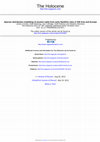
Journal of Archaeological Science, 2011
Identifying spatial and temporal variation in animal exploitation patterns is essential for build... more Identifying spatial and temporal variation in animal exploitation patterns is essential for building our understanding of the transition from hunting to stock-keeping. Quantitative analysis of the published records of over 400,000 animal bones recovered from 114 archaeological sites from SW Asia and SE Europe from c12 ka to c7.5 ka cal BP (thousands of calibrated radiocarbon years before present) demonstrates significant spatiotemporal variability in faunal exploitation patterns. Sites in the Euphrates region show adoption of domestic taxa by c10.5 ka cal BP, although on average these taxa contribute less than 10% to total assemblage size. This rises to a median of about 40% by c9.5 ka cal BP, and then to about 45% of total NISP by c8.5 ka cal BP. By c10.5 ka in the Tigris and Zagros region domesticates contribute less than 5% to faunal assemblages, but then rise to a median of about 20% by c9.5 ka and 40% by c8.4 ka cal BP. In contrast, Levantine sites have low numbers of domestic taxa (<1%) until c8.8 ka cal BP, when the proportion dramatically increases to a median of about 35%. This apparent delayed-adoption pattern also holds true for the southern Levant, which shows, on average, low levels (<1%) of domestic taxa until 8.8 ka cal BP, at which point domesticates contribute a median of about 10% to assemblages. In the northern parts of SW Asia, the mid- to late-10th millennium cal BP is pivotal, as proportions of domestic taxa show a dramatic increase in frequency during this time, and the ‘package’ of domestic sheep, goat, cattle and pig becomes more firmly established. This sets the trend for sites of the 9th millennium and the appearance of Neolithic communities in SE Europe from the 8th millennium cal BP onwards, from which point domestic animals are ubiquitous in faunal assemblages.► The problem we are addressing is how, when and where animals were domesticated in Southwest Asia during the Early Holocene. More specifically, we question the widely held view of a single trajectory towards domestication and show that there was great regional variation in faunal exploitation patterns before, during, and after the period in which animal domesticates were first brought under human control; variations which have not previously been properly recognized or defined and which have major implications for our understanding of the domestication process. ► The evidence we provide to support our conclusion is based on a meta-analysis of published zooarchaeological reports describing over 400,000 animal remains from 114 sites in SW Asia and SE Europe from the 12th to the 8th millennium cal BP. This is the most comprehensive account of published zooarchaeological data from the area of interest ever attempted. The data drawn from the exercise is subject to quantitative assessment to document regional variation in exploitation patterns. These analyses are fully documented and include a complete list of the sources used to compile the data. ► We believe the subject matter and our results are of wide enough interest for publication in JAS.

Ecological Modelling, 2011
Terraces are important capital investments in a range of agricultural landscapes worldwide, typic... more Terraces are important capital investments in a range of agricultural landscapes worldwide, typically enduring well beyond any single farming cycle and over many human generations. This paper begins by emphasising that, while human population growth may often be loosely linked to terrace construction efforts, the association is by no means a straightforward one. We then argue that the choice of which parts of the landscape to terrace is driven by a range of cultural and environmental priorities that are most usefully explored by a combination of global, local and auto-correlative modelling, as well as via simulation-based methods. The results demonstrate that surficial geology, terrain slope, preexisting terraces and pre-existing patterns of human habitation are all important structuring features. We also consider terraces as method for soil conservation, question the uncritical use of meso-scale erosion models and argue that patterns of catastrophic soil loss are often overstated in Mediterranean contexts. However, erosion modelling can, if deployed cautiously and comparatively, nonetheless be used to explore ways in which terraces do indeed manage localised soil movement in agriculturally favoured parts of the landscape, with our results suggesting that a substantial proportion of the erosion in this regions is indeed ameliorated by such measures.
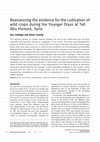
Environmental Archaeology, 2010
The episodic periods of climate change between the end of the Pleistocene and the Early Holocene ... more The episodic periods of climate change between the end of the Pleistocene and the Early Holocene had significant effects on vegetation in the Levant. The three Late Epipalaeolithic phases at Tell Abu Hureyra (c. 13?1 kya cal. BP to 12?0 kya cal. BP) span the onset of the Younger Dryas when there was a reversion to cold and dry conditions from the preceding warmer/wetter Bølling-Allerød interstadial. The deterioration of the climate is argued to have caused a recession of Mediterranean woodland from the immediate environs of the site and thus the habitats of many of the edible large-seeded annual plants became less accessible. Changes in the taxonomic composition of the archaeobotanical samples from the three Late Epipalaeolithic phases were interpreted by the original analyst as reflecting diet change in response to a reduction in resource availability, with the inception of cultivation of wild cereals and large-seeded legumes to maintain yields of these high-ranked species. In this reassessment of the data we propose an alternative model and demonstrate that the changes in plant exploitation strategies at Abu Hureyra, which coincide with the onset of the Younger Dryas, can be more parsimoniously interpreted as representing a broadening of the plant diet to compensate for a loss in availability of higherranked species.


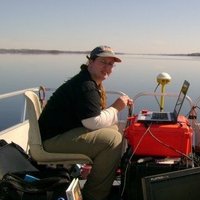





Uploads
Books by James Conolly
Edited Books by James Conolly
Papers by James Conolly
role evolution has for culture. Although there remain significant challenges in relating theoretical models to types of behaviours that may generate observable material patterns in the archaeological record, these challenges are not faced by evolutionarily influenced research programmes alone. One such evolutionarily informed approach with relevance for making sense of patterns observable in the archaeological record is costly signalling theory, which has been described as 'one of the most influential ideas in evolutionary biology’ (Huttegger, Bruner and Zollam 2015, 997). As a concept with potential powerful explanatory value, it should be assessed as to its potential for making sense ofthe signalling role of phenomena in the archaeological record that are otherwise often proximately described as manifestations of community social cohesion, polity competition, or examples of display of social power through conspicuous consumption.
role evolution has for culture. Although there remain significant challenges in relating theoretical models to types of behaviours that may generate observable material patterns in the archaeological record, these challenges are not faced by evolutionarily influenced research programmes alone. One such evolutionarily informed approach with relevance for making sense of patterns observable in the archaeological record is costly signalling theory, which has been described as 'one of the most influential ideas in evolutionary biology’ (Huttegger, Bruner and Zollam 2015, 997). As a concept with potential powerful explanatory value, it should be assessed as to its potential for making sense ofthe signalling role of phenomena in the archaeological record that are otherwise often proximately described as manifestations of community social cohesion, polity competition, or examples of display of social power through conspicuous consumption.